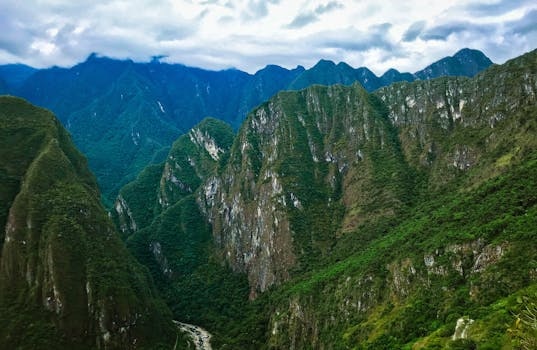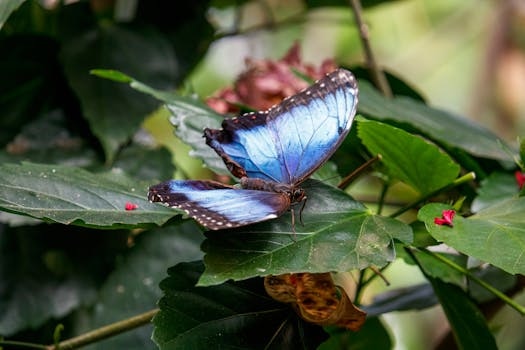Ecuador Food Guide
Content Information
Recently updated🔥Current Food Trends 2025
What's happening in Ecuador's culinary scene right now
Ecuador's 2025 culinary scene celebrates traditional dishes while embracing sustainable, farm-to-table practices. URKO in Quito creates innovative tasting menus around seasonal Andean products, while Casa Gangotena interprets Ecuadorian classics with local ingredients. Encebollado, ceviche, and hornado remain the most consumed dishes nationwide. Coastal Guayaquil showcases seafood at La Canoa (traditional) and El Caracol Azul (best encocado). Cloud-forest and Amazon lodges highlight regional ingredients with community partnerships. Sangolquí's weekend hornado markets draw crowds. Quito's Ceviches de la Rumiñahui and Pez Bela (modern seafood) lead ceviche scene. Galapagos sustainable seafood practices continue with fresh tuna, wahoo, and brujo (scorpionfish). Riobamba and Ambato perfect llapingachos with regional variations. Farm-to-table movement grows in New Cairo with Nile Delta sourcing. November 2025 sees pleasant weather (20-25C) ideal for outdoor dining experiences. Traditional fishing piers offer seasonal menus for breakfast encebollado.
Food Safety Tips
Essential food safety information to help you enjoy Ecuador's cuisine safely and confidently.
Drink bottled water
Tap water is not safe to drink in Ecuador. Stick to bottled or filtered water, and be cautious with ice in drinks outside of high-end establishments.
Street food precautions
Street food is popular and delicious, but choose vendors with high turnover and where food is cooked thoroughly at high temperatures in front of you.
Seafood safety
Seafood is excellent along the coast but should be eaten freshly cooked. Be especially cautious with ceviche from street vendors or lower-end establishments.
Wash fruits and vegetables
Ecuador has an abundance of tropical fruits. Always wash them with bottled water or peel before eating to avoid contamination.
Dietary Options
vegetarian
MEDIUM AVAILABILITYWhile traditional Ecuadorian cuisine is meat-heavy, vegetarian options are increasingly available, especially in tourist areas and larger cities. Rice, beans, plantains, and corn dishes are good vegetarian options.
vegan
LOW AVAILABILITYVegan options are limited outside of specialized restaurants in Quito and tourist areas like Baños and Montañita. Many apparently vegetarian dishes may contain lard or animal stock.
gluten-free
HIGH AVAILABILITYTraditional Ecuadorian cuisine is largely based on corn, potatoes, rice, and plantains, making many dishes naturally gluten-free. However, awareness of cross-contamination may be limited.
halal
LOW AVAILABILITYHalal food is difficult to find outside of a few restaurants in Quito. The Muslim population is very small, so awareness of halal requirements is limited.
Common Allergens
Seafood
HIGH PREVALENCESeafood is very common in coastal regions and appears in many traditional dishes.
COMMONLY FOUND IN:
Peanuts
MEDIUM PREVALENCEPeanuts and peanut sauces are used in several Ecuadorian dishes, particularly in the highlands.
COMMONLY FOUND IN:
Corn
HIGH PREVALENCECorn is a staple in Ecuadorian cuisine, used in many forms from fresh to dried and ground.
COMMONLY FOUND IN:
Tree Nuts
LOW PREVALENCEWhile not as common as other allergens, tree nuts appear in some Ecuadorian desserts and dishes.
COMMONLY FOUND IN:
Essential Food Experiences
These iconic dishes represent the must-have culinary experiences that define Ecuador's food culture for travelers.

Ceviche
Raw seafood (typically shrimp, fish, or a mix) marinated in lime juice with onions, tomatoes, and cilantro. Ecuador's version is usually more soup-like than Peruvian ceviche.

Locro de Papa
A hearty potato soup with cheese, avocado, and often served with corn. A traditional dish from the Andean highlands.

Llapingachos
Pan-fried potato patties stuffed with cheese, often served with peanut sauce, avocado, fried egg, and chorizo as a complete meal.

Encebollado
A hearty fish soup with yuca (cassava), tomatoes, and pickled onions, typically eaten for breakfast on the coast. Often served with plantain chips and popcorn.

Hornado
Whole roasted pig, a specialty in the highlands, often served with llapingachos, mote (hominy), and a variety of side dishes.

Cuy
Roasted guinea pig, a traditional Andean delicacy served on special occasions, typically accompanied by potatoes and corn. A unique culinary experience in the highlands.
Regional Specialties & Local Favorites
Discover the authentic regional dishes and local favorites that showcase Ecuador's diverse culinary traditions.

Ceviche (Seafood Cocktail)
Fresh raw seafood marinated in citrus juices, onions, and cilantro. A refreshing dish commonly enjoyed as an appetizer or light meal.
Allergens:

Fritada (Fried Pork)
Chunks of pork fried until crispy, often served with mote (boiled corn kernels), llapingachos, and aji (hot sauce). A popular street food and market staple.

Hornado (Roasted Pig)
Whole roasted pig, a traditional dish often served during celebrations and festivals. The crispy skin is a prized part of the dish.
Regional Cuisine Highlights
Explore the diverse culinary landscapes across different regions of Ecuador.
Sierra (Andes Highlands)
Hearty dishes featuring potatoes, corn, and meats like pork and guinea pig. Influences from indigenous Andean cuisine are prominent.
Cultural Significance:
Reflects the agricultural traditions and cultural heritage of the Andes region.
Signature Dishes:
- Hornado
- Llapingachos
- Cuy Asado
Key Ingredients:

Costa (Coast)
Emphasizes seafood, plantains, and tropical fruits. Ceviche, encebollado, and other seafood dishes are prominent.
Cultural Significance:
Shaped by the coastal environment and fishing traditions.
Signature Dishes:
- Ceviche
- Encebollado
- Corviche
Key Ingredients:

Amazon (Amazon Rainforest)
Features unique ingredients like yuca, chontaduro (peach palm fruit), and various river fish. Indigenous culinary traditions are strong.
Cultural Significance:
Reflects the biodiversity and cultural practices of the Amazon rainforest.
Signature Dishes:
- Maito
- Chontaduro
- Pincho de Pescado
Key Ingredients:

Galapagos Islands
Culinary scene heavily influenced by the sea. Fresh tuna, wahoo, and brujo (scorpionfish) feature prominently. Most ingredients brought from mainland due to national park regulations, but seafood is ultra-fresh.
Cultural Significance:
Galapagos sustainable seafood practices balance tourism with conservation. Seafood as fresh as it gets while respecting marine ecosystems.
Signature Dishes:
- Mariscos y arroz (seafood and rice)
- Cod with potatoes
- Shellfish ceviche with endemic mollusks
Key Ingredients:

Sweet Delights & Desserts
Indulge in Ecuador's traditional sweet treats and desserts.

Tres Leches (Three Milks Cake)
A sponge cake soaked in three types of milk: evaporated, condensed, and heavy cream. A sweet and decadent dessert.

Arroz con Leche (Rice Pudding)
Rice cooked in milk, sugar, and spices like cinnamon and cloves. A comforting and traditional dessert.

Helados de Paila (Ice Cream from a Copper Pan)
Traditional ice cream made using a large copper pan and fresh fruit juices. Often found in markets and plazas.
Traditional Beverages
Discover Ecuador's traditional drinks, from locally produced spirits to regional wines.

Canelazo (Hot Spiced Cinnamon Drink)
A warm alcoholic beverage made with aguardiente (sugarcane alcohol), cinnamon, naranjilla juice, and sugar. Popular in the Andes region.

Pájaro Azul (Blue Bird)
A potent mix of aguardiente and other liquors. Its exact composition varies but is known for its high alcohol content.
Soft Beverages
Discover Ecuador's traditional non-alcoholic drinks, from local teas to refreshing juices.

Jugo de Naranjilla (Naranjilla Juice)
A refreshing juice made from the naranjilla fruit, a citrus fruit native to the Andes. Often served with breakfast.

Chicha Morada (Purple Corn Drink)
A sweet and refreshing drink made from purple corn, pineapple, cinnamon, and cloves. A traditional beverage with Inca roots.

Agua de Horchata (Horchata Drink)
A refreshing drink made from herbs and flowers, often served chilled. The specific ingredients vary by region.